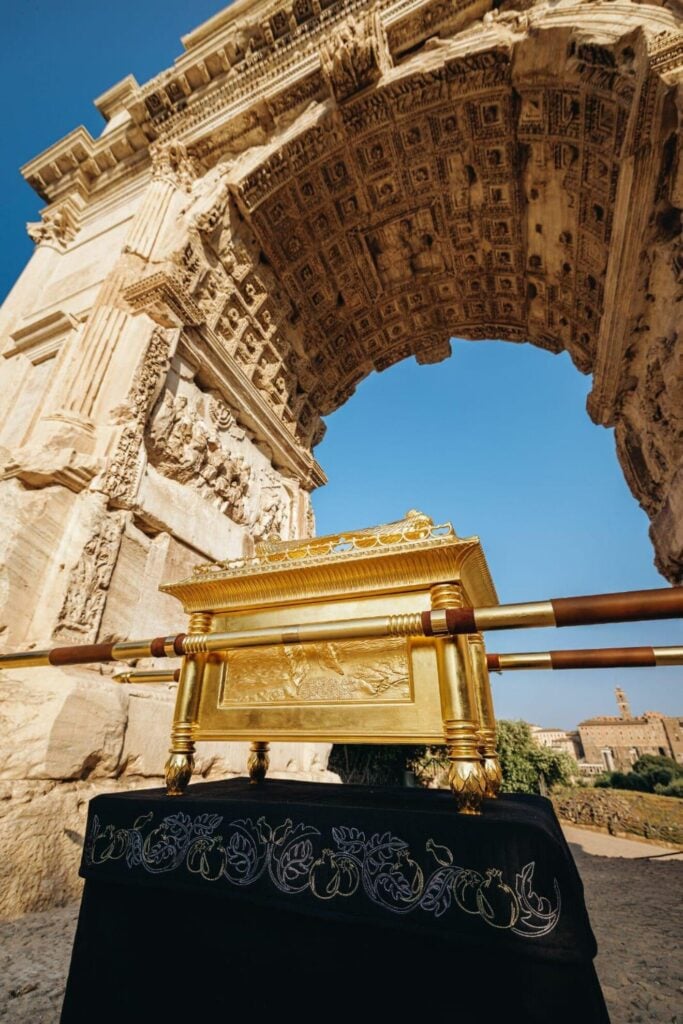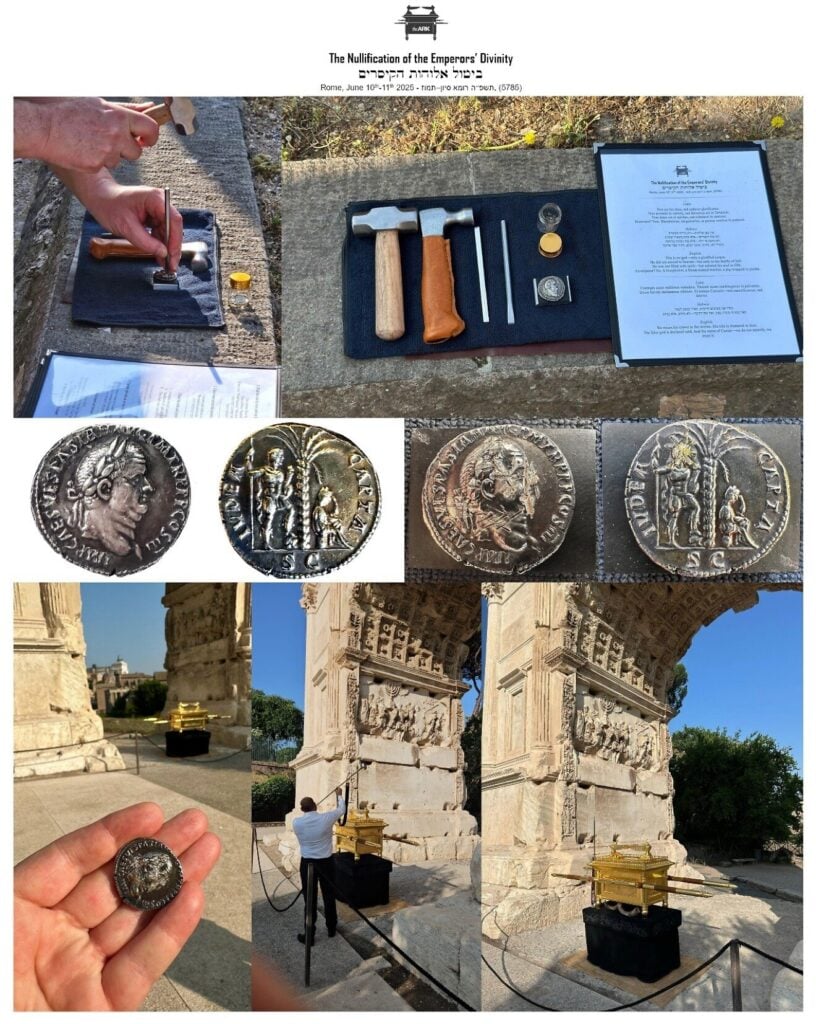In an extraordinary act of symbolic resistance, a small group of Jews gathered beneath the Arch of Titus in Rome on June 11, 2025—exactly 1,955 years after the Roman general Vespasian encircled Jerusalem—to carry out a historic, religiously grounded “nullification ceremony.”
In an extraordinary act of symbolic resistance, a small group of Jews gathered beneath the Arch of Titus in Rome on June 11, 2025—exactly 1,955 years after the Roman general Vespasian encircled Jerusalem—to carry out a historic, religiously grounded “nullification ceremony.”… pic.twitter.com/EjCBKjjOAv
— Avi Abelow (@aviabelow) July 7, 2025
Their aim? Nothing short of reversing the spiritual and legal implications of one of the most catastrophic episodes in Jewish history: the Roman conquest of Judea, the destruction of the Second Temple and the exile of the Jewish people.
What unfolded that day may sound like the script of a historical drama, but it was real—and deliberate. Participants chiseled the divine image of Vespasian from a rare silver coin, defacing the symbol of the emperor’s divinity, using tools forged from the armor of a Merkava tank damaged in Gaza.
A Levite blew a silver trumpet under the Arch, echoing the rituals of ancient Israelite war. They recited Kaddish, invoked halakhic sources on the destruction of idolatry and embedded their actions in both Roman and Jewish legal frameworks.

The Arch as a symbol—and a wound
Why such a dramatic gesture now? Because this isn’t about nostalgia or revenge. It’s about reclaiming narrative and sovereignty. It’s about Jewish agency.
The Arch of Titus was erected in 81 CE to commemorate the Roman victory over Judea and the plundering of the Second Temple. It still stands today as an open wound carved in stone depicting Roman soldiers triumphantly bearing the Temple’s menorah and sacred vessels. For centuries, many Jews avoided walking under it viewing it as a monument to humiliation and Divine abandonment.
But in recent years, attitudes have shifted. The return of Jews to sovereignty in Israel, the flourishing of Torah study in Jerusalem, and a confident new generation of religious and national thinkers are all challenging the exilic mindset. The recent ceremony in Rome wasn’t about mourning—it was about reversing a cosmic decree.

The ritual of reversal
The event, organized by Eliezer Ben Sica, drew from Talmudic sources on nullifying idolatry—chiseling the face, ears or nose of an idol to strip its power symbolically—enacting a ritual once performed by Jews hiding in the caves of the Judean Desert during the Bar Kochba revolt.
These Jews had cooking utensils etched with pagan images, and they defaced them according to Jewish law. The organizers of the Rome event sought to continue that legacy—this time not hiding but in full daylight under the approving eye of the Italian government.
Their goal: to “nullify the emperor.”
In their view, Vespasian’s claim to divinity—and the land decrees that flowed from it—formed the legal-theological basis for Roman, and later Christian, claims over Judea. If that divinity is nullified, so too are the land grants made under its authority. That includes much of the Church’s land in Israel, acquired through Constantine’s grants, which themselves trace legitimacy back to Roman rule.
By reversing Vespasian’s divinity, they argue, they also nullify the entire post-Temple exile narrative that has haunted Jewish thought for two millennia.
The exile that never ended
The conceptual weight of this ceremony goes beyond coins and chisels. As the organizer explains, “We fight wars at two levels: macro and micro. The war we never fought was the war of the exile.”
Jews, he contends, never truly contested the legitimacy of their expulsion. Instead, they internalized defeat. The silence around that original trauma became a theological axiom: we sinned, we were punished, we must accept our exile.
This quiet resignation seeped into our politics. Territorial compromise, he argues, emerges not from pragmatism, but from a lingering belief that Jews remain guests—even in their ancestral homeland.
A turning point?
Critics will call this ceremony obscure, theatrical or even fanatical. Others will dismiss it as a footnote to history. But its power lies not in public size or media attention. It lies in intent, timing and theology.
It was carried out just as war reignited in Gaza with rockets flying and sirens sounding. And in the same moment, a silver trumpet, like those of ancient Israel, sounded in Rome—a symbolic act that declared: we are not exiles anymore.
The ceremony has already prompted calls to enter its legal implications into Israel’s Knesset record and to involve rabbinical courts. Its organizers seek no eviction of churches or Vatican properties but rather a recalibration of moral and legal foundations: the Rome-based “deeds” to Israel, they argue, are null and void.
Whether this marks a genuine turning point or simply a poignant moment depends on what follows. If it prompts a deeper reckoning with the psychological scars of exile, it will have succeeded.
In an age when Jews walk freely under the Arch of Titus, this ceremony dared to flip the ancient power dynamic. Not to conquer—but to remember, reclaim and reframe.
The exile was never just physical. And neither is the return.
The song, composed two years prior, foresaw and captured the essence of this historic event…

 Whatsapp
Whatsapp




